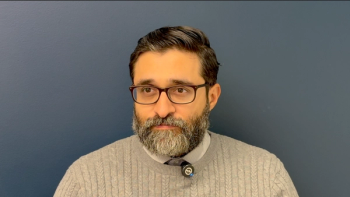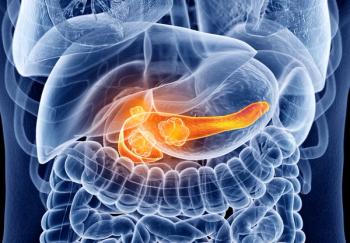
Unlikelihood of Cure Did Not Reduce Chemo Use at End of Life
Patients with lung and colorectal cancer who understood that chemotherapy would not cure them were no less likely to receive chemotherapy at the end of life.
Patients with metastatic lung and colorectal cancer who understood that chemotherapy would not cure them of their cancer were no less likely to receive chemotherapy at the end of life than patients who did not understand that fact, results of a
“Although end-of-life chemotherapy use was relatively infrequent, many of those who used it in the last month of life were aware that it would not cure them, and they wished to receive care focused on alleviating symptoms,” wrote Jennifer W. Mack, MD, MPH, of Dana-Farber Cancer Institute, and colleagues in Cancer. “The increasing use of targeted therapy may make chemotherapy more tolerable and, therefore, more appealing to patients who want to avoid highly toxic regimens. Although late-life use of chemotherapy is often considered a marker of aggressive care, our findings suggest that at least some users of chemotherapy at the end of life have other goals, including palliation.”
Prior research by Weeks et al had demonstrated that many patients with advanced lung and colorectal cancer were not aware that chemotherapy would not cure their disease. Specifically, the study by Weeks et al found that of patients with newly diagnosed metastatic lung or colorectal cancer, 69% of patients with lung cancer and 81% of patients with colorectal cancer did not understand that chemotherapy was not likely to cure their cancer.
In this analysis, Mack and colleagues examined whether knowledge about whether chemotherapy would cure cancer affected treatment decisions at the end of life. They looked at 722 patients (477 with lung cancer and 245 with colorectal cancer) who had completed a baseline survey that included information on perceptions about whether chemotherapy might be curative, but who died during the study period.
Results showed that only 33% of patients recognized that chemotherapy was not likely to cure their cancer. Overall, patients rated physician communication as favorable, with 51% of patients giving the highest rating offered.
Eighteen percent of patients in the cohort received chemotherapy within the last month of life, including more than one-fifth of the patients who acknowledged that chemotherapy was not at all likely to be curative. Patients who recognized that chemotherapy would not be curative were no less likely to receive chemotherapy than those who believed that chemotherapy offered a possibility of cure (OR = 1.32; 95% CI, 0.84-2.09).
A little more than one-third of the patients enrolled in hospice care before death. About half of those who understood chemotherapy to not be curative enrolled in hospice compared with 28.4% of those with inaccurate expectations of chemotherapy.
“One possible explanation is that, at least for some patients, late chemotherapy use may be an informed decision based on realistic expectations that it will not be curative,” the researchers wrote. “However, conversations about the incurable nature of the disease are associated with higher rates of hospice utilization, and this suggests that informed decisions about the goals of chemotherapy can have a broader impact on care, well beyond initial decisions about treatment.”
Newsletter
Stay up to date on recent advances in the multidisciplinary approach to cancer.















































































